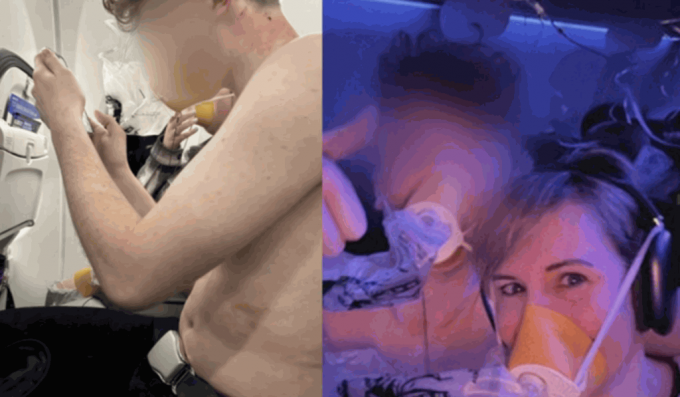Israel prevents worshipers from reaching Al-Aqsa for the 14th Friday in a row
In light of the global preoccupation with the Gaza War, Israel continued its campaign on the West Bank and its repressive practices, most notably the siege it imposes on Al-Aqsa Mosque for the 14th week in a row, and prevents Muslim worshipers from reaching it, especially on Fridays.
It deploys huge police forces, erects military barriers and iron barriers, provokes and suppresses the arrivals, imposes provocative inspections on them, and then returns them under threat to where they came from, until Al-Aqsa is almost empty of worshipers and the Old City is empty of visitors.
In the 14th week, the scene was repeated. The Israeli forces prevented thousands of worshipers from entering Al-Aqsa and allowed a small number of elderly people and women to enter it. According to the Islamic Endowments Department, the number of worshipers on Friday did not exceed 12,000, which is a quarter of the usual number on normal days.
Israeli security men monitor Palestinians heading to pray in Jerusalem on Friday (AFP)
The worshipers performed prayers in the streets of Jerusalem and the roads and nearby neighborhoods, despite the persecution, oppression, and rainy weather in the city. In the Wadi al-Jouz neighborhood, the forces attacked a group of worshipers while they were praying in the street with tear gas bombs. Also, the 1948 Palestinians, who are considered Israeli citizens, were denied entry to Al-Aqsa.
Cities, villages and refugee camps in the West Bank witnessed a series of major attacks, as every day since the outbreak of the war on Gaza. Israel continued to implement its plan to destroy the infrastructure in refugee camps for the purpose of making life there impossible. Yesterday was the turn of Nour Shams camp, adjacent to the city of Tulkarm, where the Israeli army forces caused widespread damage to the infrastructure, after operations that lasted about 7 hours.
Destruction caused by an Israeli military operation in the Nour Shams refugee camp near Tulkarm in the West Bank on Friday (EPA)
On Friday morning, public works crews and the Tulkarm Municipality began removing rubble and dirt barriers and rehabilitating some streets, especially Nablus Street, which is the main entrance to the camp that connects the city to the villages and towns of Wadi Sha’ir and the rest of the West Bank governorates. The head of the emergency department in the municipality of Tulkarm, Hakim Abu Safiya, said that what the camp was exposed to this time was a broader and more comprehensive attack than the recent attacks, and it caused greater devastation in the infrastructure of sewage, water and electricity, adding that there is no street inside the camp and its alleys that has not been destroyed. And sabotage. The demolition of the camp’s infrastructure led to damage to the water, electricity, and communications networks, causing them to be completely cut off from its neighborhoods.
Citizens of the camp said that the occupation bulldozers closed many of the entrances to the houses in the camp’s courtyard and closed its alleys with dirt berms and asphalt after deliberately bulldozing the streets, preventing them from leaving their homes. They described this attack as the strongest in terms of the widespread destruction of infrastructure.
Removing destruction caused by an Israeli military operation in the Nour Shams refugee camp near Tulkarm in the West Bank on Friday (EPA)
The bullets fired by the occupation soldiers, massively and randomly, hit the windows and doors of houses, citizens’ property, and their shops, which exacerbated the suffering of citizens, whose property was destroyed, vandalized, and bombed in every incursion, which inflicted on them heavy material losses.
In the town of Arraba, south of Jenin, Israeli army forces continued their retaliatory destruction of memorials and historical monuments. Just as the monument commemorating journalist Sherine Abu Aqla, who was killed by soldiers’ bullets, was destroyed in Jenin, the monument to the martyr Omar Al-Qassem was destroyed in Arraba, while the occupation soldiers tore up pictures of martyrs.
Security and local sources reported that the occupation forces arrested the two freed prisoners, Issam Nawaf Lahlouh (62 years old), after storming the town and raiding and searching his home and the homes of his two sons, Hani and Jawad, and Ali Jamal Abu Salah (29 years old), at the Shafi Shamron checkpoint near Nablus, during his return to… his house.
On Friday morning, Israeli forces stormed several areas in Nablus Governorate. Security sources reported to WAFA that the occupation forces stormed the old and new Askar camps, and the popular housing area east of the city, and searched a number of homes, but no arrests were reported. She added that the occupation forces also stormed the village of Azmut and the town of Beit Furik, east of Nablus, and the village of Yatma, to the south, noting that confrontations broke out in Beit Furik, but no injuries were reported.
Israeli forces also stormed the town of Sinjil, north of Ramallah, and raided a house. The mayor of Sinjil, Moataz Tawafsheh, reported that the occupation soldiers raided the home of Hussam Awashra, an expatriate in America, smashed and removed the doors, turned it into a military barracks, and set up a tent on its roof. Tawafsha pointed out that this is the second time that Awashra’s house has been raided within 5 days.
2024-01-12 22:19:48
#Hezbollah #Israel #waging #war #technology #spies


